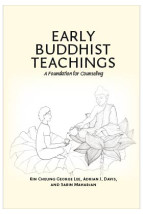Buddhist Visual Cultures, Rhetoric, and Narrative in Late Burmese Wall Paintings
(晚期緬甸皇朝寺廟壁畫的佛教視覺文化,修辭與敘事)
ISBN : 978-988-8390-88-5
January 2018
248 pages, 7″ x 10″, 90 color illus.; 1 map
- HK$420.00
Ebooks
Also Available on
Step into a Burmese temple built between the late seventeenth and early nineteenth centuries and you are surrounded by a riot of color and imagery. The majority of the highly detailed wall paintings displays Buddhist biographical narratives, inspiring the devotees to follow the Buddha’s teachings. Alexandra Green goes one step further to consider the temples and their contents as a whole, arguing that the wall paintings mediate the relationship between the architecture and the main Buddha statues in the temples. This forges a unified space for the devotees to interact with the Buddha and his community, with the aim of transforming the devotees’ current and future lives. These temples were a cohesively articulated and represented Burmese Buddhist world to which the devotees belonged. Green’s visits to more than 160 sites with identifiable subject matter form the basis of this richly illustrated volume, which draws upon art historical, anthropological, and religious studies methodologies to analyze the wall paintings and elucidate the contemporary religious, political, and social concepts that drove the creation of this lively art form.
“Buddhist Visual Cultures, Rhetoric, and Narrative in Late Burmese Wall Paintings is truly a tour de force that allows us to see Burmese temple paintings of the Life of the Buddha and similar themes as an open-ended genre that, like literary discourse, participates in wider social, intellectual, and religious contexts.” —Juliane Schober, Arizona State University
“Alexandra Green introduces this relatively unknown material and subjects it to sophisticated analysis. This study is major step towards creating a template that could be used for analyzing other late traditions of Buddhist painting.” —Janice Leoshko, University of Texas at Austin






